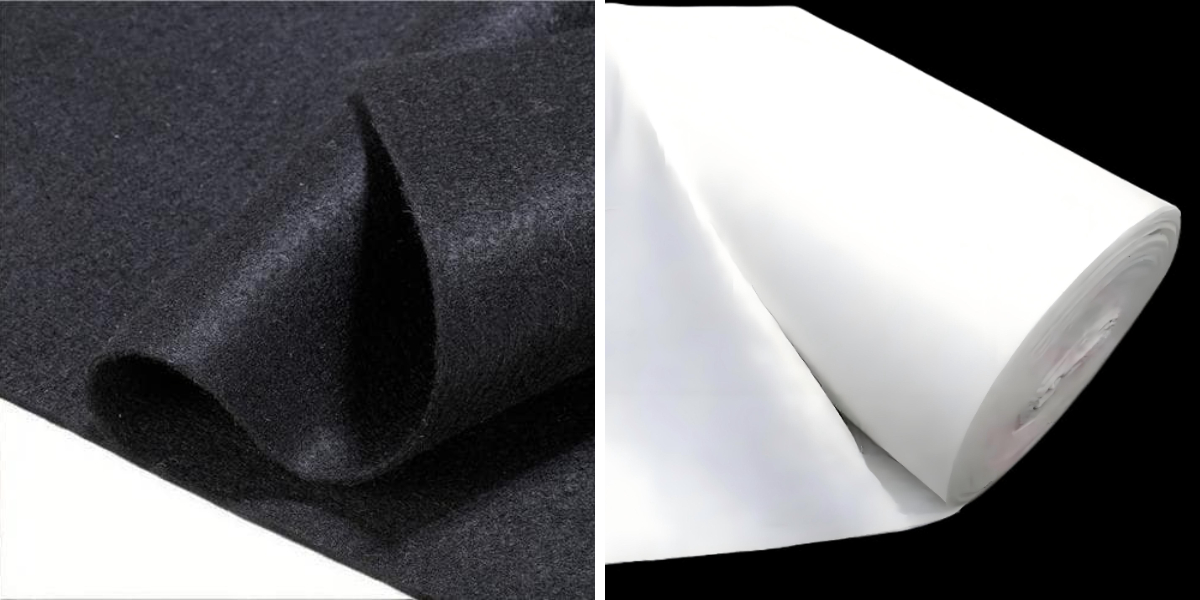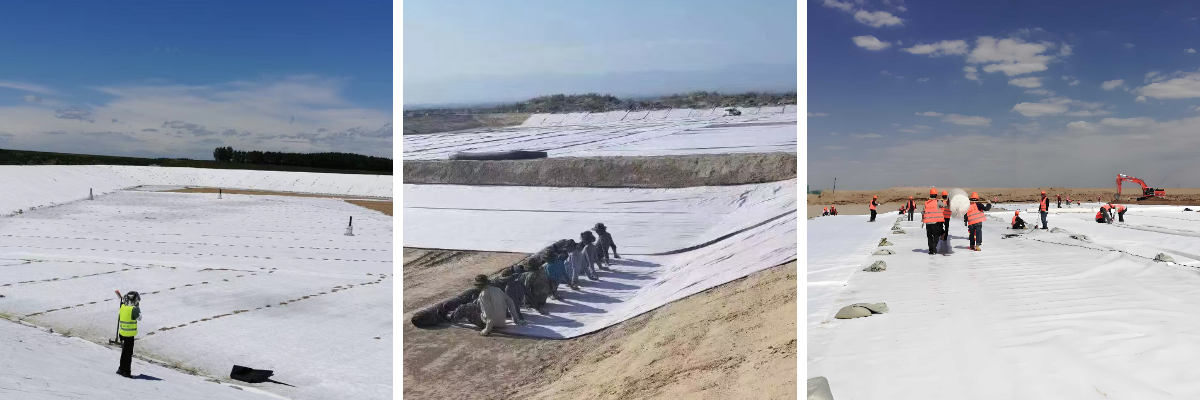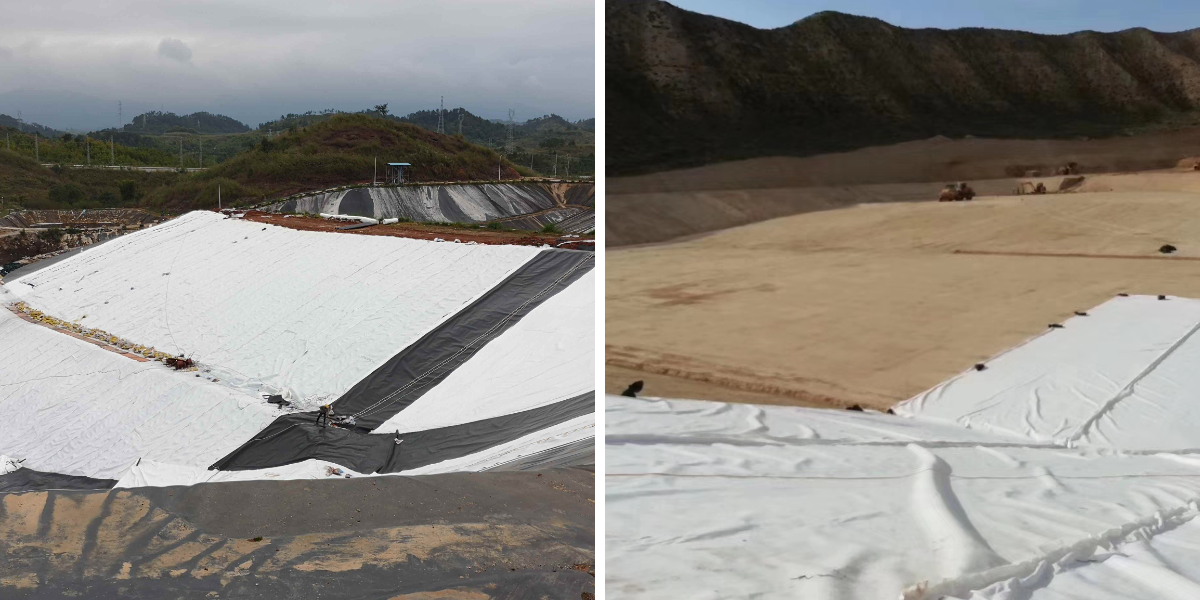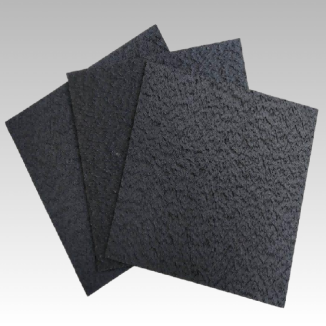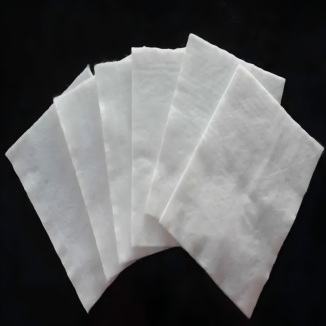Geotextiles in Road Construction: Meeting DOT Specifications for Stability
Road infrastructure needs uncompromising balance to face up to heavy traffic, excessive weather, and soil motion over decades. Department of Transportation (DOT) specs set strict requirements for materials, making sure roads are safe, durable, and reasonably priced to maintain. Geotextile fabric has end up a cornerstone of modern-day avenue construction, imparting engineered options for soil stabilization, drainage, and reinforcement that align with DOT requirements. By grasp the variations between woven non woven geotextile variations and choosing the proper geo cloth material, contractors and engineers can construct roads that exceed DOT balance benchmarks. This information explores how geotextiles decorate avenue performance, their fundamental position in assembly DOT specs, key cloth considerations, and real-world purposes that supply long-lasting results.
Why DOT Specifications Demand Geotextile Solutions
DOTs throughout areas prioritize avenue steadiness to reduce preservation costs, decrease site visitors disruptions, and guard public safety. Traditional avenue building regularly depends on thick layers of mixture to stabilize susceptible soil—a high priced and resource-intensive approach. However, soil motion (settlement, erosion, or lateral shifting) can nevertheless compromise roads over time, main to potholes, cracks, and uneven surfaces.
Geotextiles tackle these challenges by using reinforcing soil, setting apart materials, and enhancing drainage—all whilst assembly DOT specs for tensile strength, permeability, and durability. Geo cloth fabric acts as a barrier between soil and aggregate, stopping mixing that weakens the street base. It additionally distributes site visitors masses throughout a wider area, decreasing soil compaction and settlement. For DOTs, this interprets to roads that ultimate longer, require much less repairs, and higher stand up to the needs of every day use.
Woven vs. Non Woven Geotextile: Key Differences for Road Construction
Woven non woven geotextile variations serve awesome functions in avenue construction, every tailor-made to particular DOT requirements. Understanding their variations is vital to choosing the proper cloth for the job:
Woven Geotextiles
Woven geotextiles are made by using interlacing artificial yarns (typically polypropylene or polyester) in a grid pattern. Their key strengths align with DOT needs for reinforcement and load distribution:
High Tensile Strength: Woven constructions provide tremendous power in each warp and weft directions, making them best for stabilizing susceptible soil underneath heavy site visitors loads. DOT specs frequently require minimal tensile electricity thresholds, which woven geotextiles without difficulty meet.Load Distribution: By spreading site visitors weight throughout a large soil area, woven geotextiles limit stress on the street base, stopping rutting and settlement.Durability: Resistant to abrasion and UV radiation, woven geotextiles keep their overall performance in harsh avenue environments, complying with DOT toughness requirements.
Common purposes consist of street base reinforcement, subgrade stabilization for highways, and stabilizing slopes adjoining to roads.
Non Woven Geotextiles
Non woven geotextiles are made by way of bonding synthetic fibers (polypropylene, polyester, or viscose) into a porous mat. Their strengths lie in filtration, drainage, and separation—critical for DOT specs associated to water management:
Filtration: Non woven geotextiles lure soil particles whilst permitting water to drain, stopping clogging of the road’s drainage system. This meets DOT necessities for stopping water buildup that weakens soil.Separation: They create a barrier between one-of-a-kind substances (e.g., soil and aggregate), stopping mixing that degrades the avenue base. This is vital for DOT specs that mandate cloth integrity.Permeability: High porosity ensures fast water drainage, decreasing the danger of frost heave in bloodless climates—a key DOT problem for avenue stability.
Non woven geotextiles are broadly used in street subgrades, drainage layers, and as underlayment for asphalt or concrete surfaces.
Critical Geo Fabric Material Properties for DOT Compliance
DOT specs define particular geo material fabric houses to make certain avenue stability. Contractors have to prioritize these features when deciding on geotextiles:
1. Tensile Strength and Modulus
DOTs require geotextiles to have minimal tensile electricity (resistance to pulling forces) and modulus (stiffness) to face up to site visitors masses and soil movement. Woven geotextiles generally excel here, with energy rankings that meet or exceed highway-grade DOT standards. Non woven variations are chosen for lower-strength functions however nonetheless adhere to DOT thresholds for their meant use.
2. Permeability and Filtration
Water administration is fundamental for street stability, so DOTs mandate particular permeability rates. Geotextile material need to permit water to drain shortly (to stop pooling) whilst filtering out soil particles (to keep away from clogging). Non woven geotextiles are engineered with particular pore sizes to meet these specs, making sure long-term drainage efficiency.
3. UV and Chemical Resistance
Road geotextiles are uncovered to UV radiation, de-icing salts, and petroleum products. DOT specs require geo material fabric to withstand degradation from these elements. Synthetic geotextiles (polypropylene, polyester) are inherently resistant, with UV inhibitors delivered to lengthen lifespan—ensuring compliance with DOT sturdiness requirements.
4. Abrasion Resistance
During set up and street use, geotextiles face abrasion from aggregate, equipment, and traffic. DOTs set minimal abrasion resistance requirements to forestall untimely wear. Woven geotextiles, with their tightly interlaced yarns, and exceptional non woven variations meet these specs, keeping structural integrity even in high-wear areas.
Applications of Geotextile Cloth in Road Construction (DOT-Compliant)
Geotextile fabric is used in more than one degrees of avenue construction, every utility aligned with DOT steadiness goals:
1. Subgrade Stabilization
Weak or compressible subgrades (e.g., clay or sandy soil) are a main purpose of street failure. Woven geotextiles are set up between the subgrade and combination base, reinforcing the soil and distributing loads. This reduces contract and meets DOT specs for subgrade bearing capacity, permitting roads to be constructed with thinner mixture layers (cutting costs).
2. Base Course Separation and Reinforcement
Non woven geotextiles separate the combination base from the subgrade, stopping soil infection that weakens the base. Woven geotextiles add reinforcement, making sure the base withstands heavy building tools and traffic. This twin method complies with DOT necessities for base route integrity and longevity.
3. Drainage Systems
Roads require nice drainage to forestall water damage. Non woven geotextiles line French drains, culverts, and drainage ditches, filtering soil whilst permitting water to flow. This meets DOT specs for drainage efficiency, decreasing the danger of frost heave, erosion, and pavement cracking.
4. Slope Stabilization
Road embankments and adjoining slopes are inclined to erosion. Woven non woven geotextile mixtures (woven for reinforcement, non woven for filtration) stabilize slopes with the aid of maintaining soil in region and enhancing drainage. This complies with DOT security standards, stopping landslides that ought to shut roads.
Installation Best Practices for DOT Compliance
Proper set up ensures geotextile fabric meets DOT specifications. Follow these guidelines:
Site Preparation: Clear the subgrade of rocks, debris, and sharp objects that may want to puncture the geotextile. Compact the soil to meet DOT density requirements.
Correct Placement: Install geotextiles with the correct orientation (e.g., woven geotextiles aligned with visitors route for most strength). Overlap seams via 15–30cm and tightly closed with tape or staples to create a non-stop barrier.
Aggregate Installation: Place combination over the geotextile the usage of minimal impact gear to keep away from negative the fabric. Compact combination in layers as targeted via DOT standards.
Inspection: Conduct post-installation inspections to make sure geotextiles are intact, seams are secure, and placement meets DOT specs. Address any defects immediately.
Conclusion: Geotextiles—The Foundation of DOT-Compliant Roads
Geotextile cloth, inclusive of woven non woven geotextile variants, is integral for constructing roads that meet DOT steadiness specifications. By choosing the proper geo cloth cloth with the right tensile strength, permeability, and durability, contractors can create infrastructure that lasts decades, reduces upkeep costs, and ensures public safety.
DOTs apprehend geotextiles as a cost-effective, sustainable answer that enhances avenue performance. From subgrade stabilization to drainage, these substances tackle the core challenges of avenue construction, aligning with strict regulatory standards. For your subsequent avenue project, prioritize geotextiles that meet DOT specs—they’re now not simply a cloth choice, however an funding in roads that stand the check of time.
Contact Us
Company Name: Shandong Chuangwei New Materials Co., LTD
Contact Person :Jaden Sylvan
Contact Number :+86 19305485668
WhatsApp:+86 19305485668
Enterprise Email: cggeosynthetics@gmail.com
Enterprise Address: Entrepreneurship Park, Dayue District, Tai 'an City,
Shandong Province


